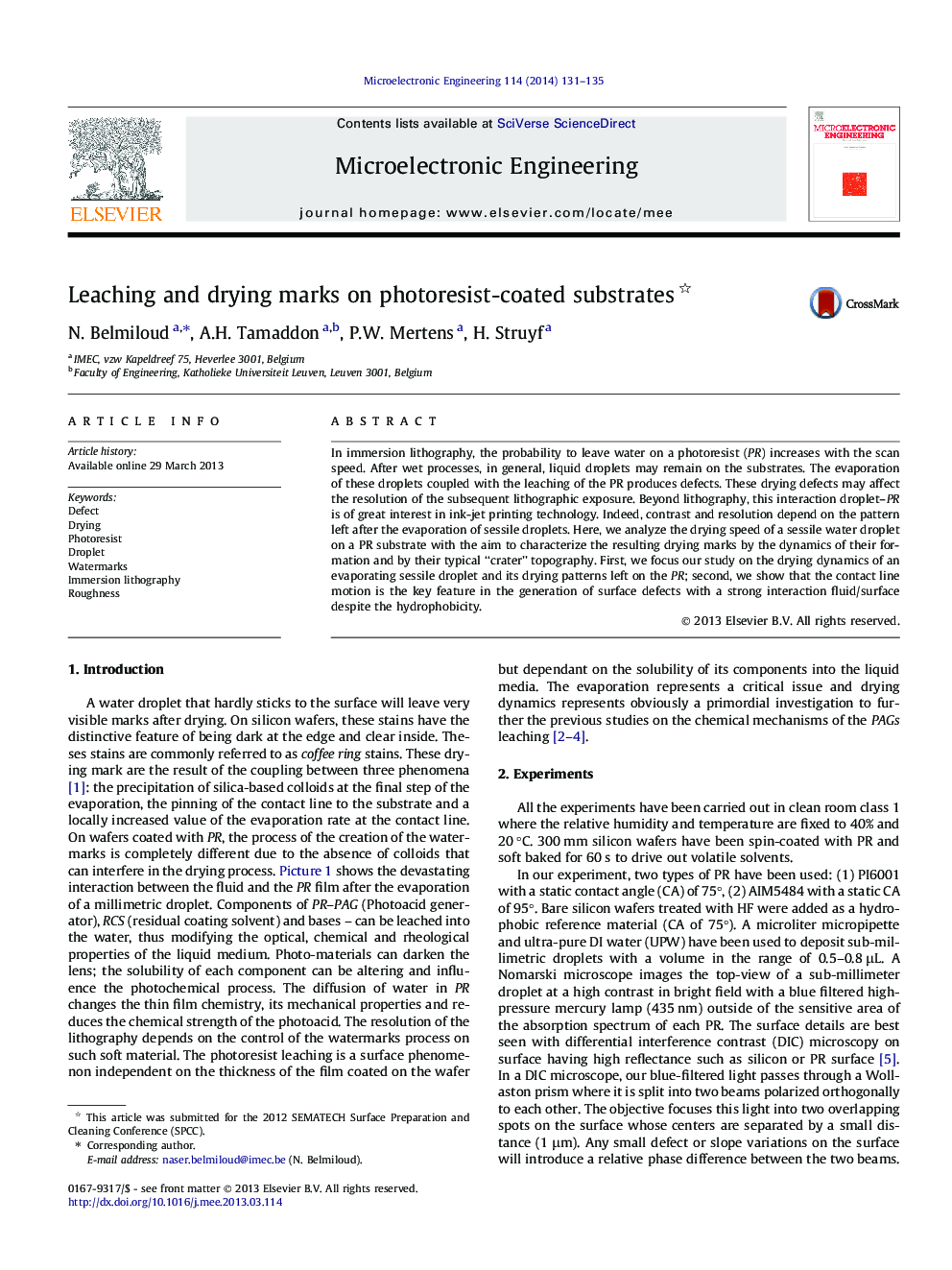| کد مقاله | کد نشریه | سال انتشار | مقاله انگلیسی | نسخه تمام متن |
|---|---|---|---|---|
| 539107 | 1450367 | 2014 | 5 صفحه PDF | دانلود رایگان |

In immersion lithography, the probability to leave water on a photoresist (PR) increases with the scan speed. After wet processes, in general, liquid droplets may remain on the substrates. The evaporation of these droplets coupled with the leaching of the PR produces defects. These drying defects may affect the resolution of the subsequent lithographic exposure. Beyond lithography, this interaction droplet–PR is of great interest in ink-jet printing technology. Indeed, contrast and resolution depend on the pattern left after the evaporation of sessile droplets. Here, we analyze the drying speed of a sessile water droplet on a PR substrate with the aim to characterize the resulting drying marks by the dynamics of their formation and by their typical “crater” topography. First, we focus our study on the drying dynamics of an evaporating sessile droplet and its drying patterns left on the PR; second, we show that the contact line motion is the key feature in the generation of surface defects with a strong interaction fluid/surface despite the hydrophobicity.
Our study shows that the contact line dynamics creates critical issues in ultra-clean process for the drying step. There are 3 steps in the formation of defects left by residual droplets as it can be seen in Fig. 1. During the lifetime of an evaporation sessile droplet on PR-film, several phenomena have been observed: the change of the chemical/rheological properties of the fluid, the “photopinning” of the droplet and the micro/nanobubbles formation. The drying marks result from a strong interaction between the substrates and the liquid despite the hydrophobicity of the PR film. The contact line drying dynamics is a key feature as it shapes the surface topography and increase the roughness of the photoresist. The shape of the contact line is affected by the surface defect and topology. Indeed, the contact line partially pins onto local defects those distort the initial circular shape of the contact line. Our developed model relates the shape of the contact line to the size and the spatial distribution of the defects onto the surface. The divergence of the evaporation at the contact line is the source of unwanted precipitation and residues. The evaporation flux coupled to the conservation of non-volatile species at the interface act together to generate a pump-effect that enhances the leaching of the PR inside the water.Figure optionsDownload as PowerPoint slide
Journal: Microelectronic Engineering - Volume 114, February 2014, Pages 131–135